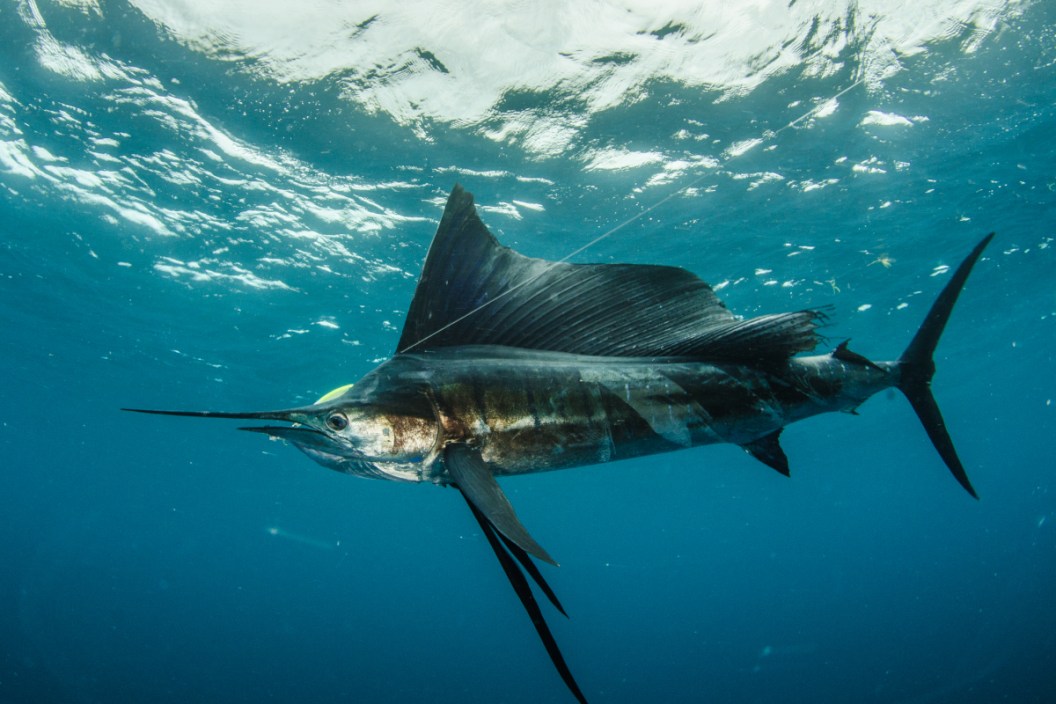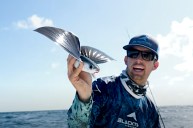Sailfish vs. swordfish: here are the differences and what we prefer about each.
Here are two of our favorite fish to target, catch, and even eat. Despite the similarities, there some notable differences between the sailfish and the swordfish. Even the marlin can be included in this conversation, but for now it's sailfish vs. swordfish. They may look similar and even act in the same way at times, but they are different species and have different adaptations.
They are both members of the billfish family, which are top level ocean predators. Both come with long bills and muscular physiques, and they even look the same to the uneducated eye. Finding the distinct differences isn't so hard once you get to know them, and that's what we're here for.
Since they are prized gamefish species that are targets by sportfishing enthusiasts in fisheries around the world, it stands to reason that even everyday recreational anglers would like to know more about the two fish species. Facts like distribution, behavior, and especially appearance are the notable factors, along with how to catch them!
Let's start right off with the obvious.
Appearance
It should be said right off the top that the swordfish is generally much larger than the sailfish, making the distinction between adults fairly simple. Sailfish commonly range in the 35 to 65 pound range, but big sailfish can go easily over 100 pounds.
The swordfish on the other hand can be the bruiser of the two. Swordfish have a much rounder, more cylindrical body allowing them to routinely top the 200-pound mark, with the largest ever caught tipping the scales at over 1,400 pounds!
One of the easier methods to discern the two is by looking at their dorsal fins. While the swordfish has a slim, crescent-shaped dorsal, the sailfish has a longer, more unique fin that runs almost the entire length of their body which looks like a sail when fully extended.
Since the swordfish dives at such great depths - routinely up to more than 1,500 feet - they have much larger and more obvious eyes which allow them to gather much more light in the deeper water.
Sailfish have what could be called teeth and scales where swordfish do not. The swordfish has a much longer bill and smooth skin as it reaches adulthood.
Range
Sailfish and Swordfish are a fairly widespread species which are native to the temperate waters of the Atlantic, Pacific, and Indian Oceans. Sailfish prefer water temperatures on the warmer end, between 70 and 80 degrees, where swordfish are adapted to a much wider range of temperatures, especially on the colder side.
Swordfish routinely dive to great depths to hunt for prey and are a fish that migrate annually to warmer waters in winter and cooler waters in summer.
Sailfish
The sailfish or Istiophorus albicans is considered the fastest fish in the ocean, reaching speeds of almost 50 mph. They seek out such prey as mackerel, needlefish, sardines, and anchovies just to name a few.
They have the amazing ability to change their body color virtually instantly to other sailfish when hunting. This has the effect of communicating their intentions when in attack mode. The distinct sail on their back is one of the best ways to tell the two apart.
Swordfish
The swordfish or Xiphias gladius eats everything from squid and octopus, to bluefish and mackerel in the ocean depths. Adult swordfish live twice as long as sailfish, up to nine years, and can grow much larger.
Swordfish sometimes attack their prey so violently that they cut it in half, mostly while feeding at night. One amazing fact about the swordfish is that they possess special organs in their heads that keep their brain and eyes warm in cold water!
Other Considerations
Both of these famous sportfish are apex predators that come under the heading of marine fish that are considered pelagic. While the swordfish plies deep waters to hunt, both predatory fish hunt with the idea to stun smaller fish before eating them.
As a billfish species they both have a fairly long body length and a similar short lifespan. They swim the open oceans in search of their next meal of jacks, flying fish, or whatever they can chase down. They do not reach the vast sizes of the other billfish such as the black marlin or the blue marlin, but they are vacuums of small baitfish wherever they roam from the Caribbean to the Indo-Pacific Ocean.
Products featured on Wide Open Spaces are independently selected by our editors. However, when you buy something through our links, we may earn a commission.
Looking for a new way to display those antler sheds? Go to Rack Hub and use the coupon code Craiger. Be sure to follow my webpage, or on Facebook and YouTube.
NEXT: WOMAN BREAKS 65-YEAR-OLD RECORD WITH MONSTER BROADBILL SWORDFISH
WATCH





